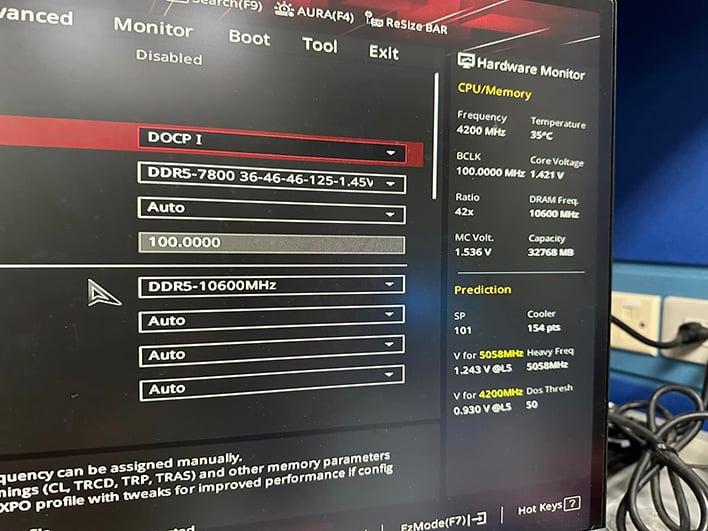Overclocker Achieves Record DDR5-10600 On A Ryzen 8000 APU & ASUS ROG Motherboard
To accomplish the sky-high five-digit frequency, SoonHo utilized a Ryzen 7 8700G, Thermalright AIO, and an Asus ROG Crosshair X670E Gene micro-ATX motherboard. For RAM, the overclocker choose a kit of G.Skill Trident Z5 7800MT/s dual-channel memory featuring a capacity of 32GB (16GB per DIMM).

10,600MT/s is a serious DDR5 speed, and if stable could seriously improve the 8700G’s integrated graphics performance. As we demonstrated in our 8700G review, the integrated graphics chip runs significantly better with high-speed XMP/EXPO DDR5 memory. This is due to the architectural limitations of AMD’s integrated graphics. Since there is no dedicated video memory present inside of the iGP, the graphics chip has to rely on slower system RAM to handle VRAM duties.
In testing we found the 8700G can gain up to 20% additional performance from upgrading memory alone. The Ryzen 7 8700G officially supports up to 5200MT/s memory, but when we ran benchmarked the Zen 4 APU with much quicker 6400MT/s memory, its performance improved by 15% to 20% in 3DMark Night Raid and 3DMark Fire Strike.
We wouldn’t be surprised if the 8700G could gain another substantial jump in performance by running the memory at 10600MT/s. The only disadvantage of SoonHo’s sky-high DDR5 overclock, is the loose timing’s he had to run with to achieve such high frequencies. On top of this, the Ryzen 7 8700G’s memory controller is probably running a less optimal FCLK:UCLK:MEMCLK configuration as well, which will increase latency even more.
Either way, it will be interesting to see how memory overclock evolve on AMD’s latest Ryzen 8000 series APUs. If most chips are capable of running 10,000MT/s or more, as SoonHo demonstrated with his 8700G it might be worth running these chips with such a high frequency, at the cost of latency, to squeeze as much performance out of the iGPU as possible.

